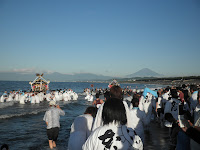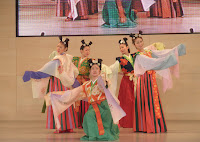
May 5, 2010
Japan struggling to better environment for children
Japan has been trying to increase the number of children to counter the aging of society, but its efforts are far from a success in improving the situation for young people. May 5 is a national holiday, the Children’s Day, in Japan. The media reported various events held for the day across the country, but there were also sad incidents.
A 33-year-old woman of Kawasaki, north of Yokohama, reportedly strangled her nine-day-old daughter to death before giving herself up to the police. The incident is the latest of a host of child abuses in Japan. The woman is reported to have told police she did not like child care. “This is just incredible,” my wife said. Raising a child is a pleasure for parents. This must be the case for any periods. But Japan may be a hard place now for children and parents to live in.
People revere and want the seven kinds of treasures, but they are of no use at all to me. Furuhi, a boy who was born between my wife and I, was as precious as a white pearl for us. After dawn with the morning star in the sky, he did not leave the bed and hoped to play with us, standing and sitting. After sunset with the evening star in the sky, when I said “Now, go to bed,” he took my hands and told us in a sweet voice, “Sleep beside me, Mom and Dad. Let’s sleep side by side.” I looked forward to seeing his life, bad or good, after he grew up. But a strong side wind occurred all of a sudden. We had no idea what to do about it. Putting white sashes on my shoulders and holding a perfectly clear mirror in my hands, I prayed to the god of the heaven and prostrated myself before the god of the earth. Whether we get sick or not is determined by the gods’ ideas. While so thinking, I screamed and offered a prayer, but he never recovered. His face gradually became pale, and he stopped talking and died. I jumped and stamped my foot in grief. I lay with my face on my stomach. I looked up to the heaven. I grieved over his death while beating my chest, and I threw my son out of my hands. Is this what the world is all about?
(A personal translation)
This verse is a waka poem believed to have been composed by Yamanoue Okura, who lived in the eighth century. He was one of the greatest poets whose pieces were adopted for Japan’s oldest waka poem anthology Manyoshu. He served mainly as a provincial governor and a judge. Okura made many waka poems concerning children and their parents.
The number of children less than 15 years old in Japan fell to the lowest level on record of 16.94 million as of April 1, 2010, down 190,000 from a year earlier and a 29th consecutive decline, according to a government report. The percentage of children declined to 13.3 pct, almost a third of the figure for 1950.
Reform-minded Prime Minister Yukio Hatoyama's government has implemented a series of measures to support child-raising. Among them is a program to pay 26,000 yen in cash a month for all children 15 years old or younger. This is in line with the ruling Democratic Party of Japan’s pet phrase “Shift focus from construction-oriented public works to human beings.” But critics warn the payment will only increase economic burdens on children themselves in the future. The measure, based on a law enacted in March, is estimated to cost 2.25 trillion yen this year and 4.5 trillion yen from next year on. There lies a rough road ahead for the government to carry out people-oriented policies while rehabilitating the state finances.



















































